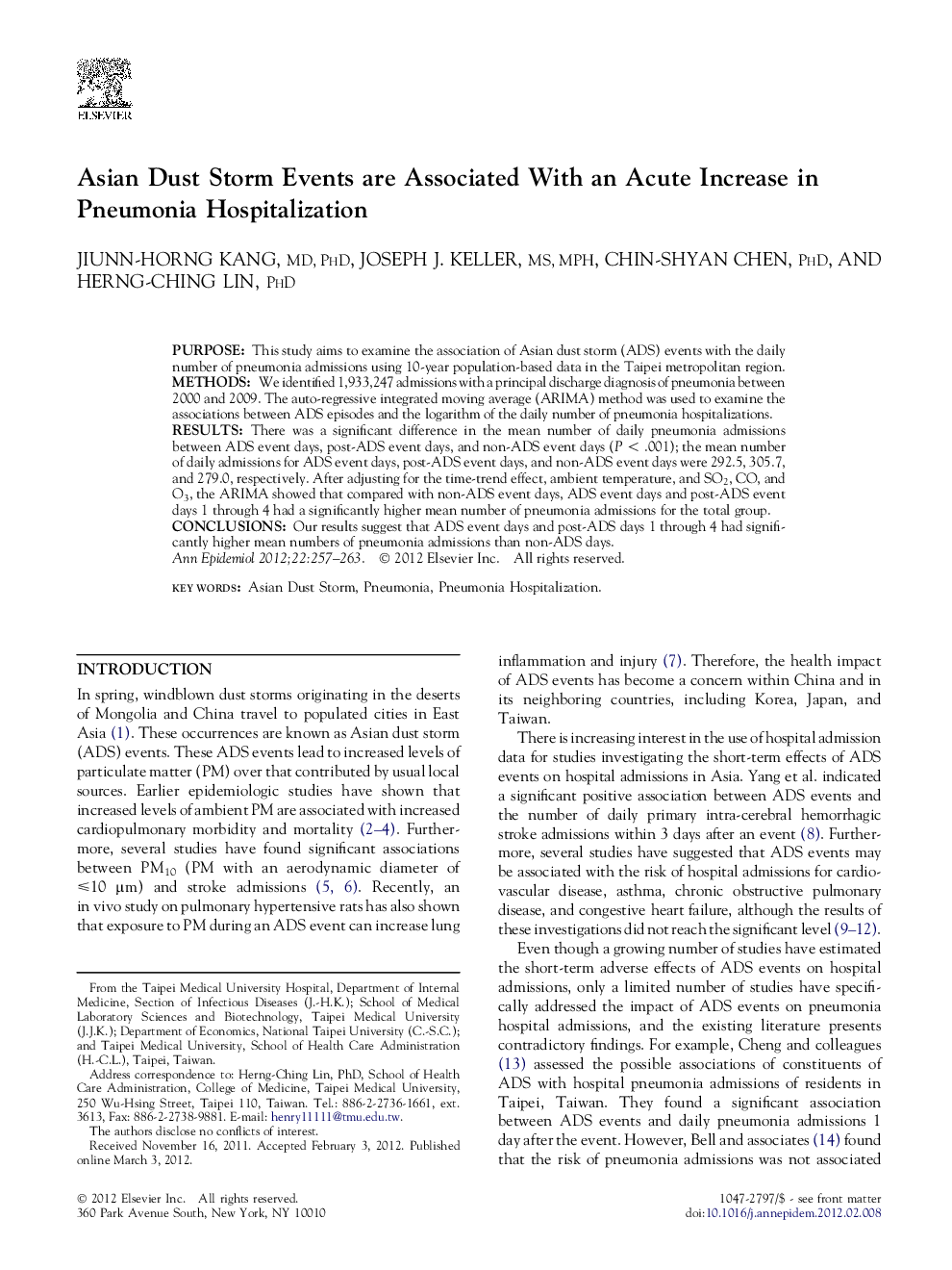| Article ID | Journal | Published Year | Pages | File Type |
|---|---|---|---|---|
| 3444444 | Annals of Epidemiology | 2012 | 7 Pages |
PurposeThis study aims to examine the association of Asian dust storm (ADS) events with the daily number of pneumonia admissions using 10-year population-based data in the Taipei metropolitan region.MethodsWe identified 1,933,247 admissions with a principal discharge diagnosis of pneumonia between 2000 and 2009. The auto-regressive integrated moving average (ARIMA) method was used to examine the associations between ADS episodes and the logarithm of the daily number of pneumonia hospitalizations.ResultsThere was a significant difference in the mean number of daily pneumonia admissions between ADS event days, post-ADS event days, and non-ADS event days (P < .001); the mean number of daily admissions for ADS event days, post-ADS event days, and non-ADS event days were 292.5, 305.7, and 279.0, respectively. After adjusting for the time-trend effect, ambient temperature, and SO2, CO, and O3, the ARIMA showed that compared with non-ADS event days, ADS event days and post-ADS event days 1 through 4 had a significantly higher mean number of pneumonia admissions for the total group.ConclusionsOur results suggest that ADS event days and post-ADS days 1 through 4 had significantly higher mean numbers of pneumonia admissions than non-ADS days.
